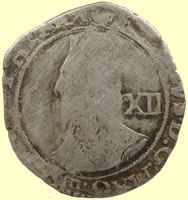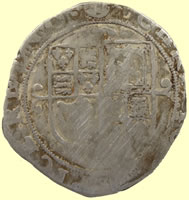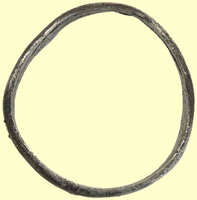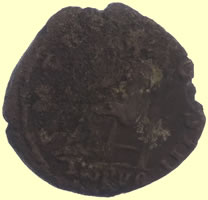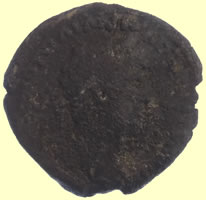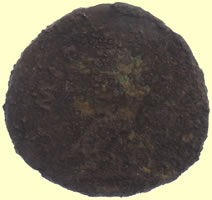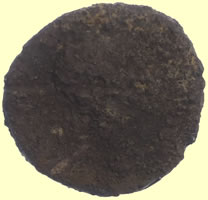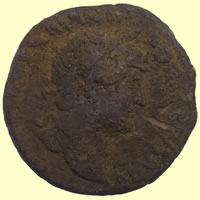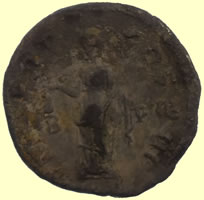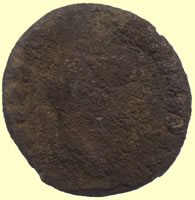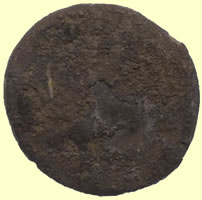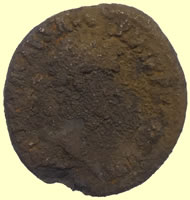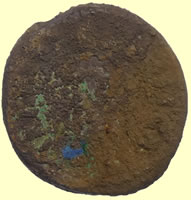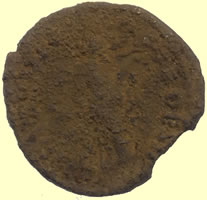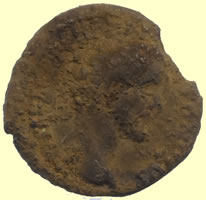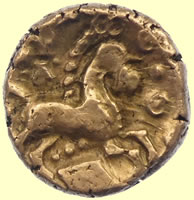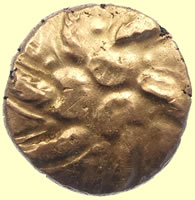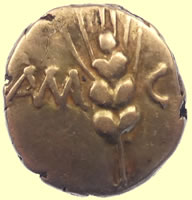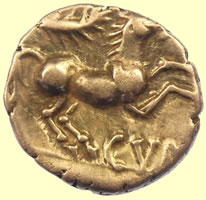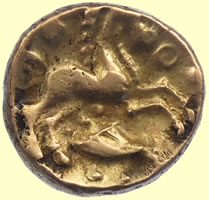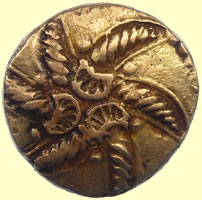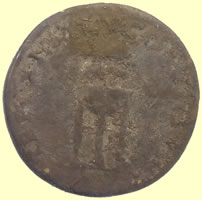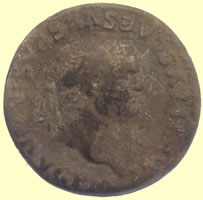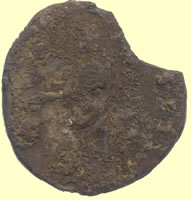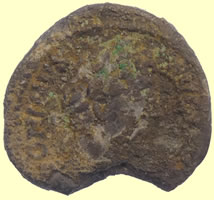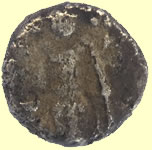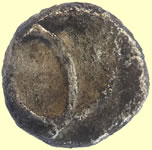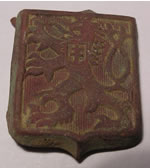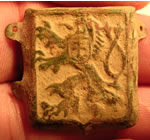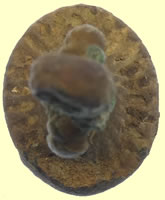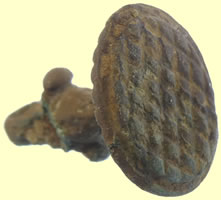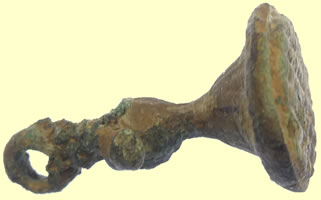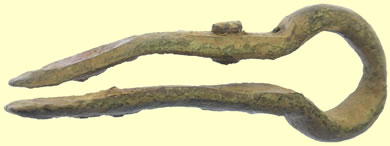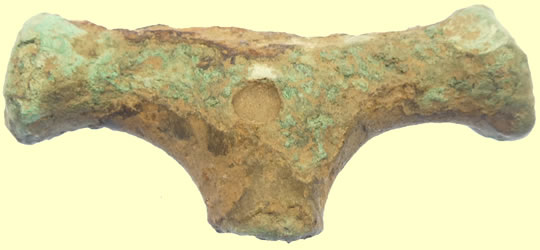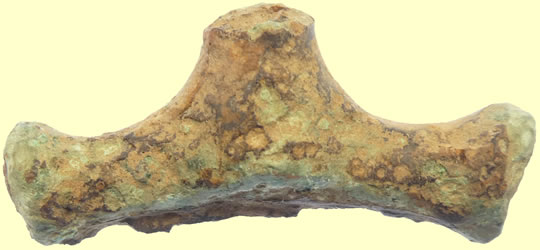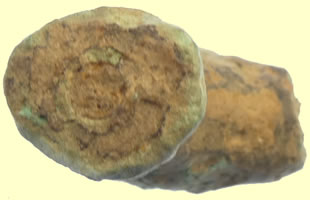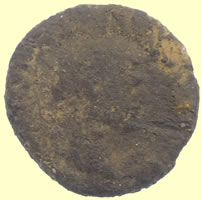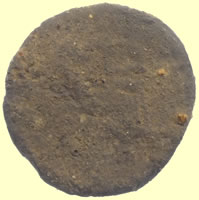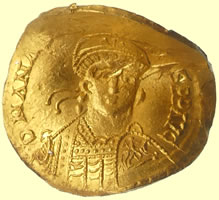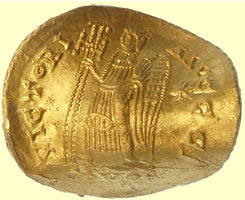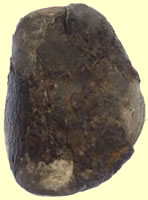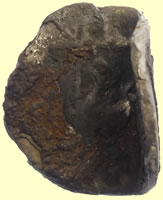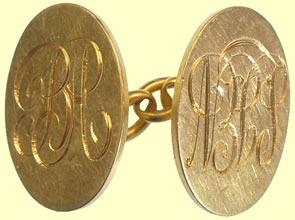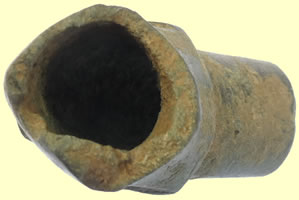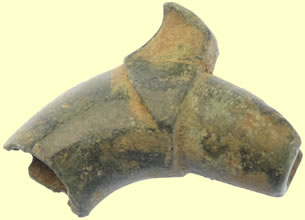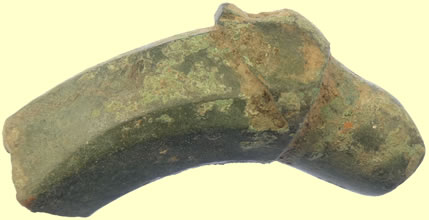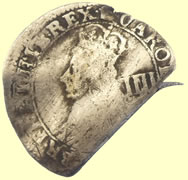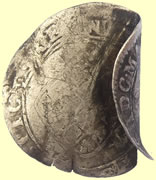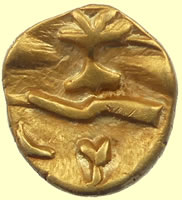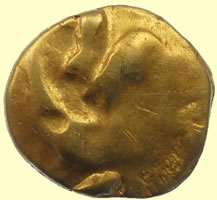

Metal detecting holidays in England with the World's most successful metal detecting club.20 years plus.
Twinned with Midwest Historical Research Society USA.
2020 Feb Finds page |
 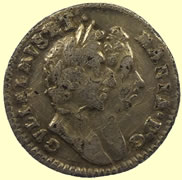 |
 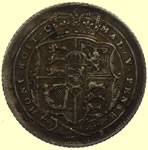 |
|||||||||||||||||
| 1690 William and Mary milled silver four pence | 1816 George III milled silver sixpence | |||||||||||||||||
1636-8 Charles 1st hammered silver shilling (12 pence)- Tun mint mark |
||||||||||||||||||
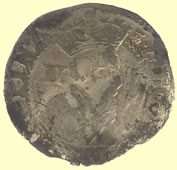 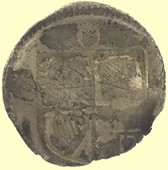 |
 |
|||||||||||||||||
| 1621- 3 James 1st hammered silver half groat - Thistle mint mark | 1500-1650 buckle | |||||||||||||||||
 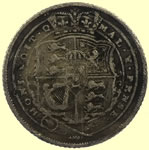 |
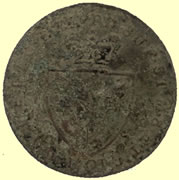 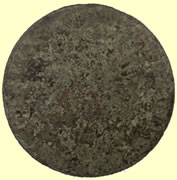 |
|||||||||||||||||
| 1819 George III milled silver sixpence | George III half guinea gaming token | |||||||||||||||||
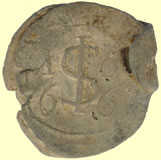 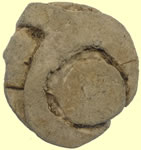 |
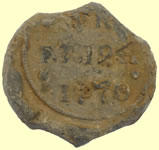 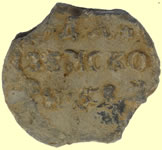 |
|||||||||||||||||
| 1666 lead bale seal | 1770 Russian lead bale seal | |||||||||||||||||
Silver finger ring - no markings |
||||||||||||||||||
Roman silver hoard coin 1 - reported to museum and sent for ID Hadrian, 117-138 AD. Mark |
||||||||||||||||||
Roman silver hoard coin 2- reported to museum and sent for ID Probably Trajan, 98-117 AD. |
||||||||||||||||||
 |
 |
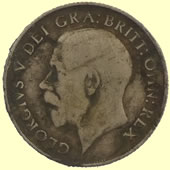  |
||||||||||||||||
| 15thC lead token | 17thC lead token | 1920 George V milled silver shilling | ||||||||||||||||
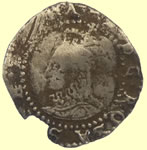 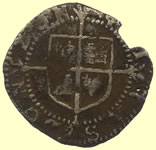 |
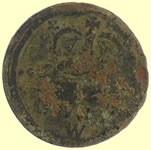 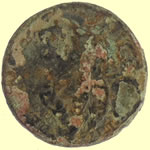 |
|||||||||||||||||
| 1595- 8 Elizabeth 1st hammered silver penny | 1694 William III guinea coin weight | |||||||||||||||||
 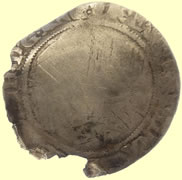 |
 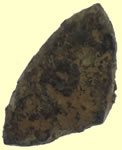 |
|||||||||||||||||
| 1559 Elizabeth 1st hammered silver groat | Roman silver coin fragment | |||||||||||||||||
 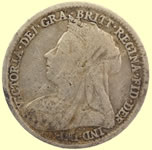 |
 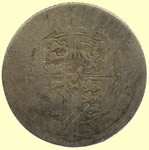 |
|||||||||||||||||
| 1895 Victoria milled silver three pence | 1818 George III milled silver sixpence | |||||||||||||||||
Roman silver hoard coin 4 - reported to museum and sent for ID Hadrian, 117-138 AD.
Mark |
||||||||||||||||||
Roman silver hoard coin 5 - reported to museum and sent for ID I suspect this is Hadrian too, (117-138 AD.) and possibly a “LIB PVB” AR denarius like Mark |
||||||||||||||||||
Roman silver hoard coin 6 - reported to museum and sent for ID I’m pretty sure this is Antoninus Pius (138-161 AD.) another AR denarius. |
||||||||||||||||||
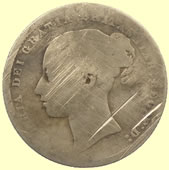  |
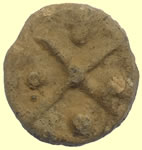 |
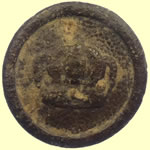 |
||||||||||||||||
| 1874 Victoria milled silver shilling | 15thC lead token | WWI Bavarian Army button | ||||||||||||||||
45 BC Addedomarus Celtic gold full stater - reported as hoard addendum coin to museum 5.54g,17mm |
||||||||||||||||||
10- 40 AD Cunobelin Celtic gold qtr stater -reported as hoard addendum coin to museum 1.35g,11mm |
||||||||||||||||||
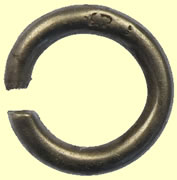 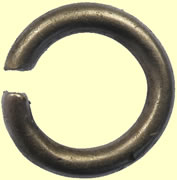 |
 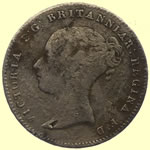 |
|||||||||||||||||
Victorian gold jewelry chain ring - Lion hall marked London 1.05,12mm dia |
1851 Victoria milled silver sixpence | |||||||||||||||||
45 BC Addedomarus Celtic gold full stater - reported as hoard addendum coin to museum 5.44g, 17mm |
||||||||||||||||||
 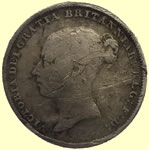 |
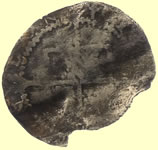 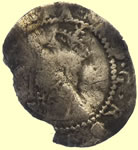 |
|||||||||||||||||
| 1838 Victoria milled three sixpence | 1580-1 Elizabeth 1st hammered silver penny - Latin cross mint mark | |||||||||||||||||
Roman silver hoard coin 8 - reported to museum and sent for ID # 8 is from half a century or more prior to the other pieces in the “hoard” so far – which all seem to be of the adoptives and Antonines.
Mark |
||||||||||||||||||
Roman silver hoard coin 9 - reported to museum and sent for ID # 9 |
||||||||||||||||||
Weight: 0.83 gm. Diameter: 8 mm Die axis: 12 o'clock Four-armed Vishnu standing facing, holding chakra in each upper hand Double C monogram Reference: Pridmore 19, KM C416, MNI 1807-08 8mm,0.85g |
||||||||||||||||||
Hello, |
||||||||||||||||||
 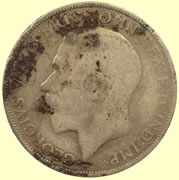 |
 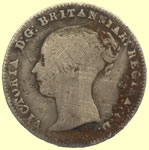 |
|||||||||||||||||
| 1923 George V milled silver florin (24 pence) | 1878 Victoria milled silver 3 pence | |||||||||||||||||
 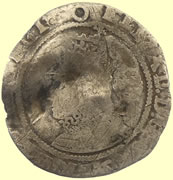 |
||||||||||||||||||
1600 Elizabeth 1st hammered silver sixpence - O mint mark - 6th issue First ever 1600 dated Elizabeth we have found and first O mint mark |
||||||||||||||||||
Georgian fob chain pipe tamper |
||||||||||||||||||
 |
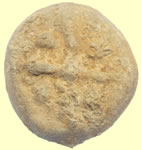 |
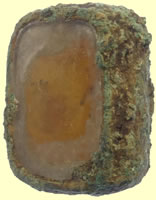 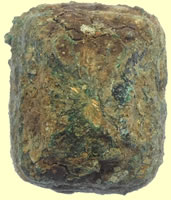 |
||||||||||||||||
| 15thC lead token | 15thC lead token | Georgian fob chain decoration | ||||||||||||||||
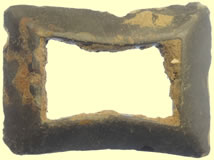 |
 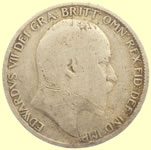 |
|||||||||||||||||
| 1500-1650 buckle | 1906 Edward VII milled silver sixpence | |||||||||||||||||
|
||||||||||||||||||
| Medieval gilded strap fitting | ||||||||||||||||||
 |
 |
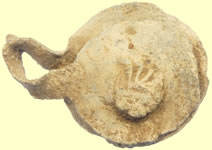 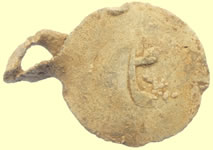 |
||||||||||||||||
| WWII Royal Artillery button | Georgian button | Complete Post medieval lead cloth seal | ||||||||||||||||
1st BC Iron Age bronze dagger quillion with iron tang. |
||||||||||||||||||
 |
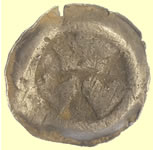 |
|||||||||||||||||
| 18thC toy cannon | 17thC Charles II silver button - reported as treasure to museum | |||||||||||||||||
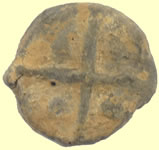 |
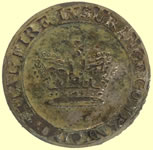 |
 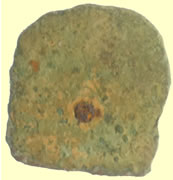 |
||||||||||||||||
| 15thC lead token | Medieval mount | |||||||||||||||||
2ndC Roman silver coin - needs cooking to remove crust |
||||||||||||||||||
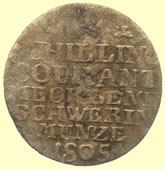 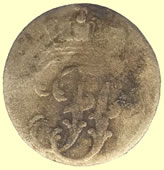 |
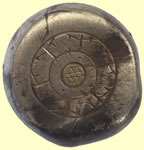 |
 |
||||||||||||||||
| 1805 German 1 SCHILLING COURANT milled silver coin | 18th C Royal Navy silver buttons | Unrecorded 5th Dragoon guards button Description: Crowned Hannover Horse over V D.G with VESTIGIA NULLA RETRORSUM around. Category: Dragoons Type of button: Slightly Convex; Metal: Copper Alloy, silver gilded. Backmark: ; Date: c1780-1796 Crimera war period The 5th Dragoons became Princess Charlotte of Wales's Dragoon Guards in 1804. |
||||||||||||||||
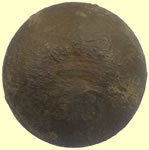 |
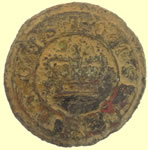 |
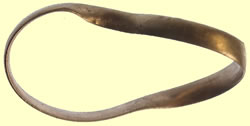 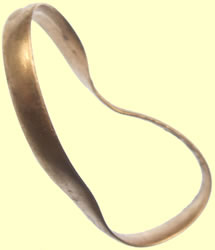 |
||||||||||||||||
| 19thC The 53rd (Shropshire) Regiment of Foot button | Victorian Customs button | Plain gold finger ring - rose gold no hall marks 0.74g,23mm |
||||||||||||||||
5thC Roman gold ID'd by Mark Lehman Very cool! I’m always impressed by the gold you folks find – it looks like it won’t be too terribly hard a job to straighten it out. 4.51g, 19.5mm |
||||||||||||||||||
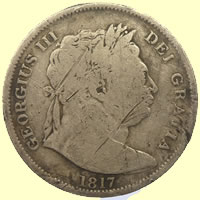 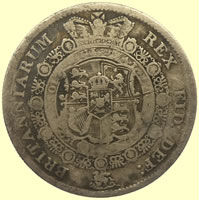 |
||||||||||||||||||
1817 George III milled silver half crown (30 pence) 13.41g,32mm |
||||||||||||||||||
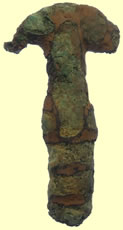   |
 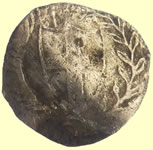 |
|||||||||||||||||
| Very unusual 2nd C Roman fibular brooch | 1649 Commonwealth hammered silver penny | |||||||||||||||||
 |
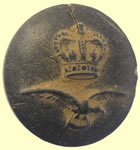 |
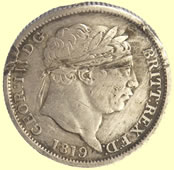 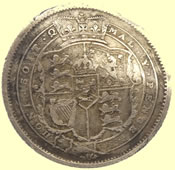 |
||||||||||||||||
| Cast copper alloy mount of probable late medieval or post medieval date (1400-1600) | Post WWII Royal Air force button | 1819 George III milled silver shilling | ||||||||||||||||
First Taco'd Roman silver coin I have seen - needs serious cooking to remove crust |
||||||||||||||||||
Unrecorded 1st Regiment - Horse Volunteers BHV Sent to MBB for their views |
||||||||||||||||||
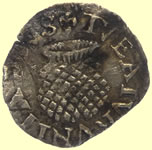 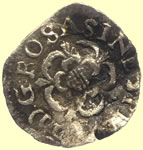 |
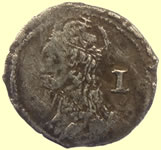 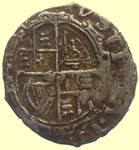 |
|||||||||||||||||
| 1604-5 James 1st hammered silver penny - Lis mint mark | 1625 Charles 1st hammered silver penny | |||||||||||||||||
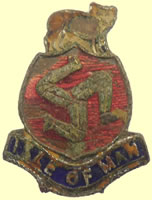 |
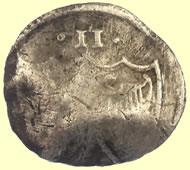 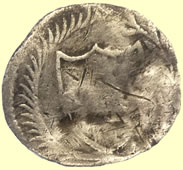 |
|||||||||||||||||
| 20thC Isle of Man enameled badge | 1649 Commonwealth hammered silver two pence | |||||||||||||||||
 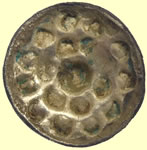 |
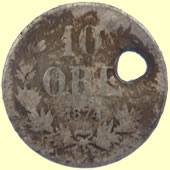 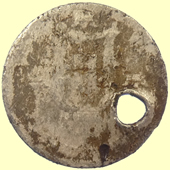 |
|||||||||||||||||
| Victorian silver button face | 1874 Sweden 10 Ore milled silver coin | |||||||||||||||||
 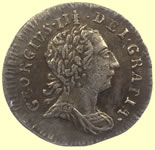 |
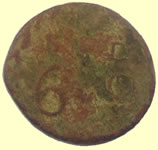 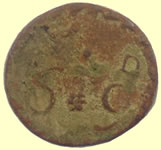 |
|||||||||||||||||
| 1776 George III milled silver penny | 1770's coin weight - six shillings and nine pence Obv S6 9D |
|||||||||||||||||
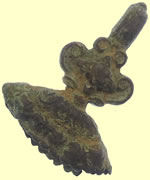 |
 |
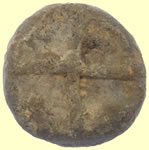 |
 |
|||||||||||||||
| Georgian fob seal holder | RN Capt / Commander - 1787 |
15thC lead token | 19thC hunting button | |||||||||||||||
 |
  |
|||||||||||||||||
| Great western railways button | Victorian copper signet ring | |||||||||||||||||
 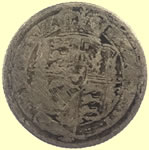 |
 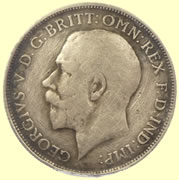 |
|||||||||||||||||
| 1817 George III milled silver sixpence | 1918 George V milled silver florin (24 pence) | |||||||||||||||||
 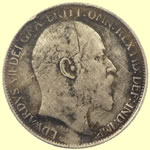 |
 |
|||||||||||||||||
| 1909 Edward VII milled silver sixpence | Unknown button with Union Jack flag | |||||||||||||||||
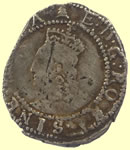 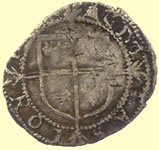 |
 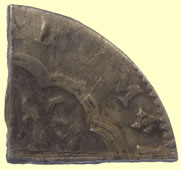 |
|||||||||||||||||
| 1582-3 Elizabeth 1st hammered silver penny - Bell mint mark | 18thC Spanish Philip V 4 reales milled silver coin | |||||||||||||||||
Stunning 18 carat gold monogrammed cuff links - Dated June 1899 |
||||||||||||||||||
 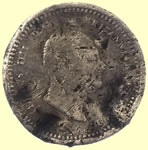 |
  |
|||||||||||||||||
| 1837 William IV milled silver two pence | Illegible hammered silver groat | |||||||||||||||||
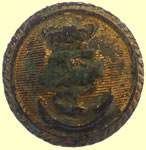 |
 |
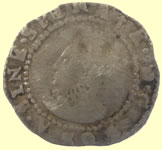 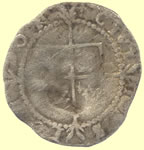 |
||||||||||||||||
Victoria crown 1843- 1890 |
19thC livery button | 1580-1 Elizabeth 1st hammered silver penny - Latin cross mint mark | ||||||||||||||||
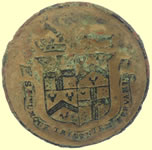 |
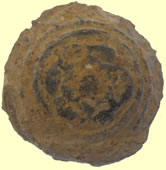 |
 |
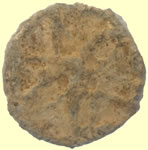 |
|||||||||||||||
| 19thC livery button | 16thC lead mount | Georgian button | 15thC lead token | |||||||||||||||
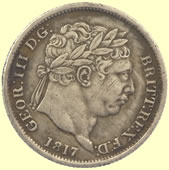 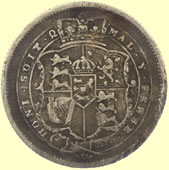 |
 |
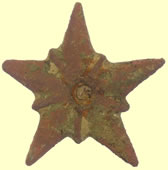 |
||||||||||||||||
| 1817 George III milled silver shilling | 1900's Generic Merchant Navy Officers |
A post medieval copper alloy spur rowel dating to c. AD 1500-1700. The object is formed of a five pointed star with a circular aperture in the centre of the star. Between each of the five slender arms is a smaller point, which forms a more floral star incorporated with the larger shape. SWYOR-02F55B is a similar example, albeit with a more squat and thickened central area. That record references a number of similar spurs dating from this period, including SUR-E3DEE2, BUC-D5359, and IOW-2AEB97 |
||||||||||||||||
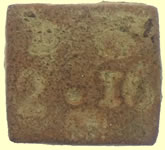 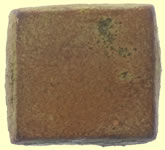 |
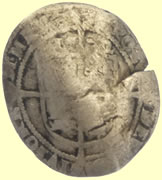 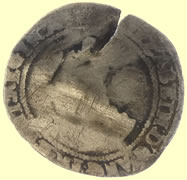 |
|||||||||||||||||
| 18thC 2 pennyweight and 16 grains bullion weight | 1572 Elizabeth 1st hammered silver sixpence | |||||||||||||||||
 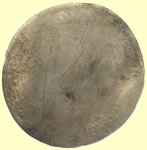 |
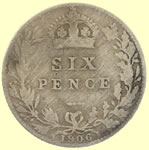 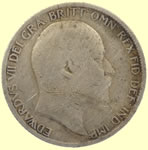 |
|||||||||||||||||
| 1696 William III milled silver sixpence | 1906 Edward VII milled silver sixpence | |||||||||||||||||
|
||||||||||||||||||
| 2 - Medieval to Post-Medieval barrel tap and spigot (c. AD 1400 – c. AD 1550). | ||||||||||||||||||
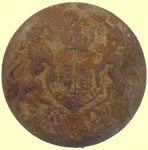 |
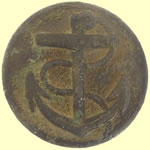 |
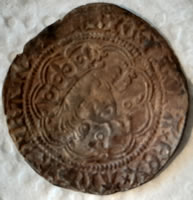 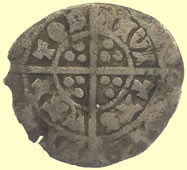 |
||||||||||||||||
| 19thC Army General service button | RN Capt / Commander - 1787 RN Lieutenant - 1787 |
1327 Edward III hammered silver half groat Rev CIVI/TAS/CAN/TOR- Canterbury mint |
||||||||||||||||
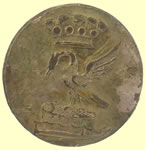 |
 |
 |
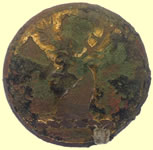 |
|||||||||||||||
| 19thC livery button | Medicine bottle | Victorian toy spinning top | 19thC livery button | |||||||||||||||
Weird widget - George V copper penny made concave to fit in to a heavy bezel |
||||||||||||||||||
First ever 1642 Charles 1st hammered silver groat I have seen - IIII behind bust Plume mint mark Shrewsbury
|
||||||||||||||||||
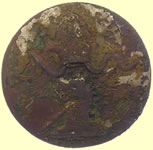 |
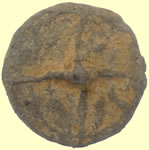 |
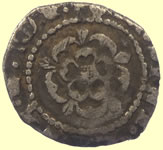 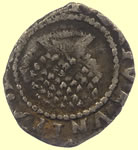 |
||||||||||||||||
| 19thC livery button | 15thC lead token | 1603 James 1st hammered silver penny | ||||||||||||||||
 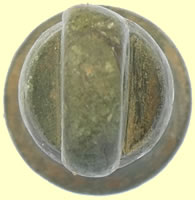 |
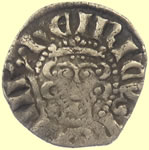 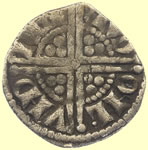 |
|||||||||||||||||
| Georgian bell trade weight | 1247 Henry III hammered silver voided long cross penny Obv hENRICVS REX III Rev REN/AVD/ONL/LVND - Moneyer Renavd London mint |
|||||||||||||||||
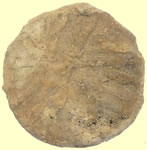 |
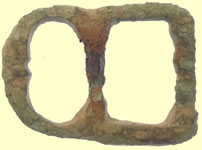 |
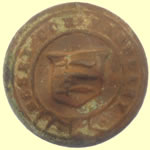 |
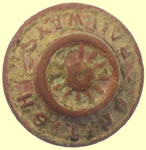 |
|||||||||||||||
| 15thC lead token | 1500-1650 buckle | 20thC Essex Corporation button | 20thC British Railway button | |||||||||||||||
 |
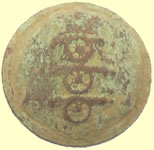 |
 |
||||||||||||||||
1900's Generic Merchant Navy Officers |
Victorian Royal Artillery button | 18thC toy cannon | ||||||||||||||||
70BC Morini Celtic gold qtr stater - sent to museum for recording 11mm,1.48g |
||||||||||||||||||
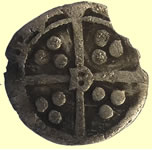 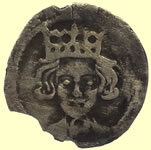 |
 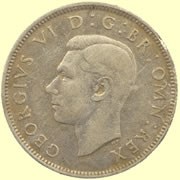 |
|||||||||||||||||
1470-3 Edward IV hammered silver penny - Durham mint B at centre of reverse cross |
1942 George V milled silver florin (24 pence) | |||||||||||||||||
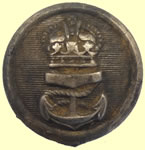 |
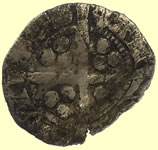 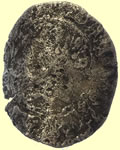 |
|||||||||||||||||
First silver button of this type I have seen RN Capt / Commander - 1901 Kings Crown |
1279 Edward III hammered silver penny Rev CIVI/TAS/CAN/TOR - Canterbury mint |
|||||||||||||||||
 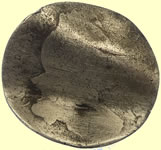 |
 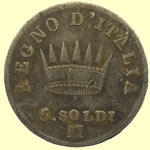 |
|||||||||||||||||
| 1696 William III milled silver sixpence - love token | 1810 Napolleone 1810 Italy KINGDOM of NAPOLEON 5 Soldi 1810 M MILAN silver coin
|
|||||||||||||||||
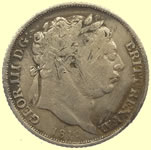 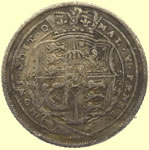 |
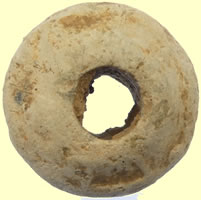 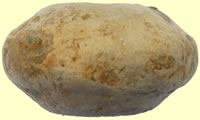 |
|||||||||||||||||
| 1819 George III milled silver sixpence | Decorated medieval lead spindle whorl | |||||||||||||||||
  |
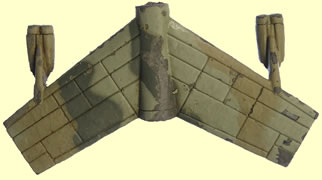 |
|||||||||||||||||
| Victorian monogrammed silver watch | Toy bomber | |||||||||||||||||
 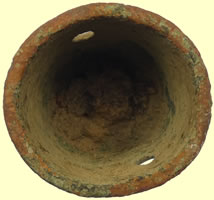 |
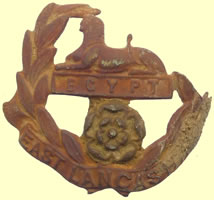 |
|||||||||||||||||
| 18thC bullion cup weight | WWI East Lancashire regiment button | |||||||||||||||||
 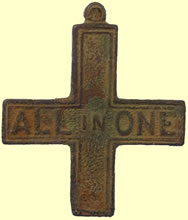 |
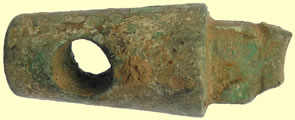 |
|||||||||||||||||
'all in one' cross pendant CMSE Civil Military Support Element ? |
Georgian Barrel tap | |||||||||||||||||
Sept 2018 Finds pageOct 2018 Finds pageFeb 2019 Finds pageSept 2019 Finds pageOct 2019 Finds pageMarch 2020 Finds page
|
 |
